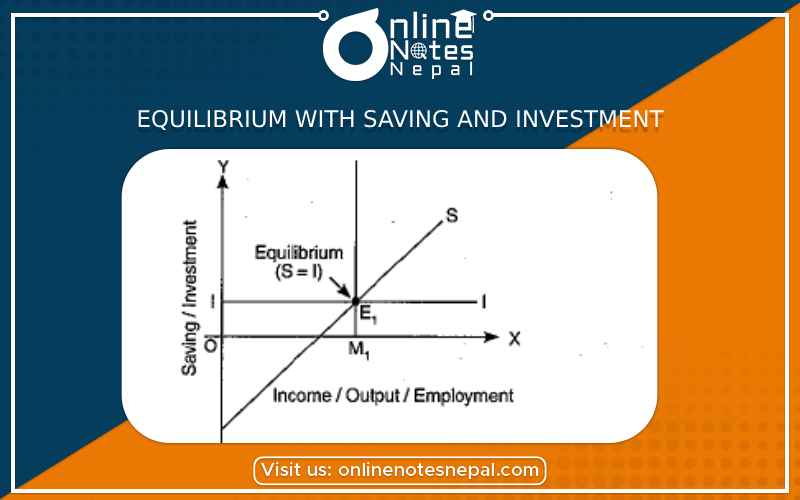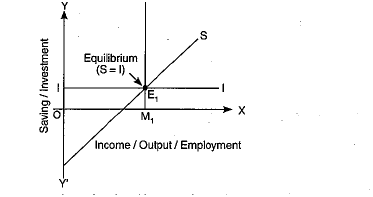Published by: Dikshya
Published date: 05 Jul 2023

In an economy, the equilibrium level of income is determined by the equality of saving and investment. Let's explore how saving and investment interact to establish equilibrium:
Saving: Saving refers to the portion of income that households, businesses, and the government set aside for future use rather than immediate consumption. Saving represents the leakage of income from the spending flow.
Investment: Investment, on the other hand, refers to the expenditure made by firms or businesses to acquire or expand their capital stock, such as machinery, equipment, buildings, or research and development. Investment represents an injection of spending into the economy.
Equilibrium Level of Income: In an economy, the equilibrium level of income occurs when saving equals investment. This equilibrium condition ensures that all saving is matched by an equal amount of investment, resulting in a stable economic situation.
If saving exceeds investment (S > I), it implies that there is an excess supply of funds in the economy. In this case, there may be insufficient investment opportunities, and the excess saving may  lead to reduced economic activity and potential unemployment.
lead to reduced economic activity and potential unemployment.
Conversely, if investment exceeds saving (I > S), it suggests that there is an excess demand for funds in the economy. This situation can lead to increased borrowing, rising interest rates, and potential inflationary pressures.
Adjustment Mechanism: In an economy, adjustments occur to restore equilibrium between saving and investment. Here are two scenarios:
S > I (Saving exceeds Investment): When saving exceeds investment, firms experience decreased demand for their products or services, resulting in a decline in output and income. As a consequence, firms may cut back on investment, and the reduced level of investment helps align saving with investment, restoring equilibrium.
I > S (Investment exceeds Saving): When investment exceeds saving, firms experience increased demand for their products or services, leading to an expansion in output and income. As a result, firms may increase investment to meet the demand, which helps to equalize saving and investment, bringing the economy back to equilibrium.
The equilibrium level of income with saving and investment is a crucial concept in macroeconomics. It highlights the importance of the relationship between saving and investment in determining the overall level of economic activity and growth.